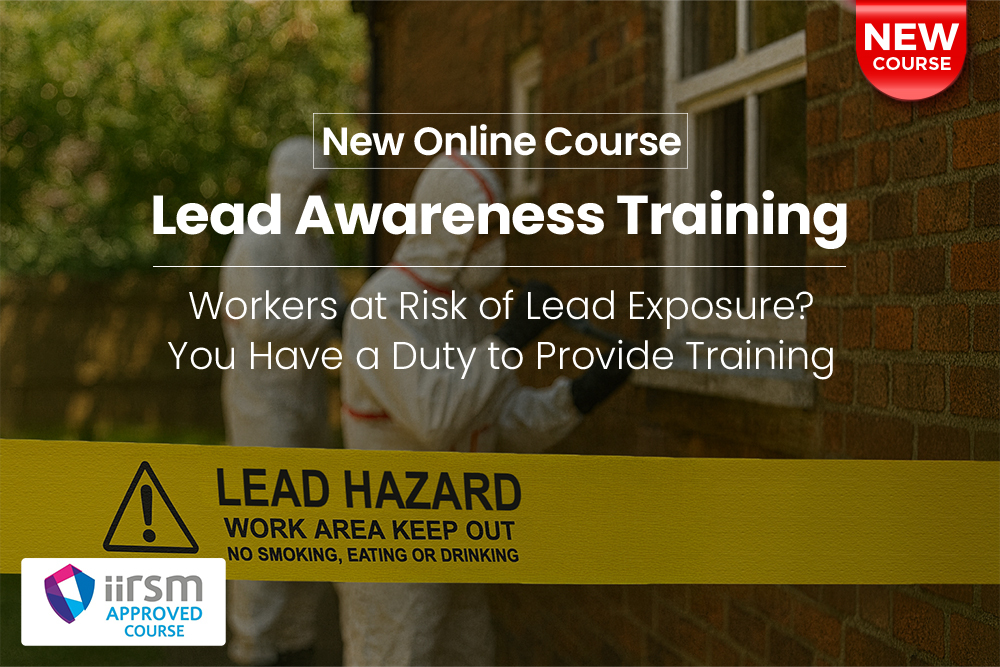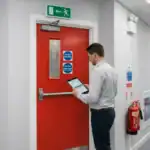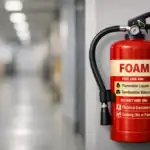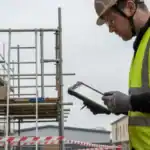
Construction is the most dangerous industry in the UK. Even experienced workers get injured, sometimes fatally. If you oversee site safety, you must plan how you’ll protect everyone on-site, particularly members of the public.
Our guide explores protecting the public during construction work. It covers your legal duties and the measures you must take. It will help you comply with legislation, secure your site against unwanted visitors and prevent the most common injuries that members of the public suffer.
Construction Fatalities
According to the Health and Safety Executive (HSE), construction remains the most dangerous industry in the UK.
Industry fatalities are sadly consistent. In 2023/24, 51 construction workers lost their lives. The year before, it was 45.
It’s similar for public deaths. Over the past five years, 19 members of the public were killed by a construction work-related accident. Tragically, this number includes several children.
Thankfully, these incidents are rare. But any loss of life is a sad reminder of the critical importance of ensuring public safety on construction sites.
What the Law Says
When it comes to work on construction sites, the law is clear: you must conduct your business without putting the public at risk.
Section 3 of the Health and Safety at Work etc. Act 1974 (HSWA) requires employers to prevent harm caused by their work activities. This includes harm to both employees and the public.
To ensure public safety during construction, you’ll need to comply with two key sets of regulations:
- The Management of Health and Safety at Work Regulations 1999
- The Construction (Design and Management) Regulations 2015
The Management of Health and Safety at Work Regulations require you to carry out assessments of on-site health and safety risks and plan how these risks can be eliminated or controlled.
The Construction (Design and Management) Regulations (CDM) apply to all construction projects. Under CDM, a competent person must plan how to make every project phase, from initiation to closeout, as safe as possible.
Protecting the public during construction is one issue the client and principal contractor must consider early in the planning phase.
CDM Training
Our CDM Training course gives a thorough understanding of Construction Design and Management Regulations (CDM Regulations) 2015, how a CDM project works and the risk assessment process to carry out a construction project.
Protecting the Public during Construction Work
Protecting the public during construction involves two main methods:
- Managing site access to prevent unauthorised entry
- Controlling hazards that could affect public safety
Managing Site Access
You must secure your construction site. Accidents happen when members of the public are on-site illegally or unsupervised. To prevent unauthorised access, you must:
- Plan the site perimeter
- Provide the site perimeter
- Maintain the site perimeter
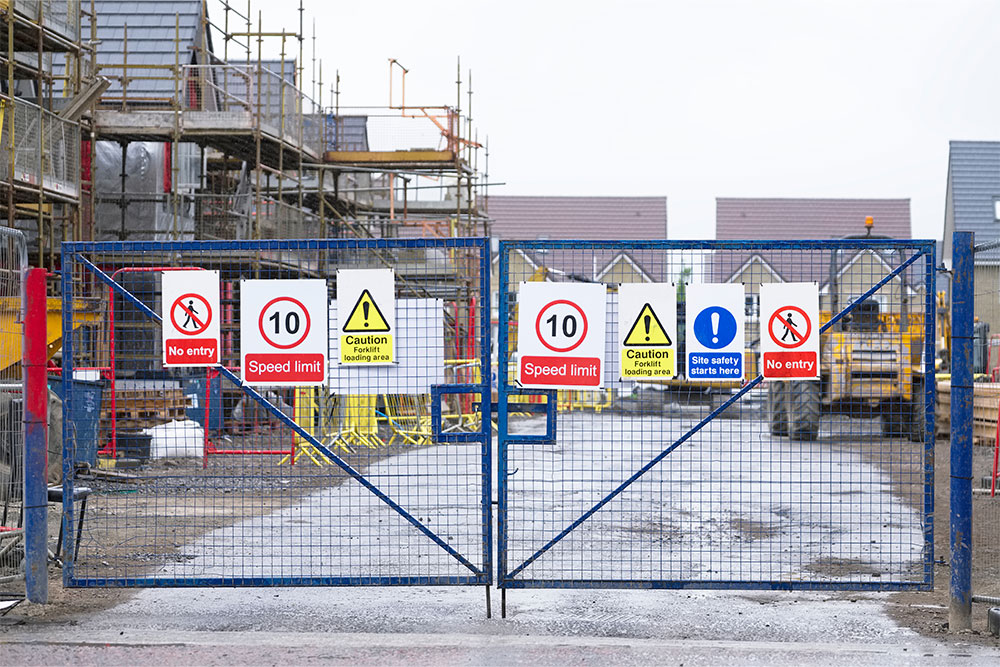
Planning
A risk assessment is necessary to decide what perimeters need to be set, where they must be and what type is necessary to protect the public. Consider the:
- Nature and type of construction work happening
- Population density around the construction site
- Potential visitors
- Possibility of children accessing the site
- Site characteristics (e.g. existing boundaries or proximity to other buildings)
It’s also important to consider site entrances and offices. Offices and entrances should ideally be close together so supervisors can more easily monitor access.
Also, check if public footpaths or rights of way cross the site. You’ll need to work with local authorities to establish diversions.
Providing
Generally, a 2-metre perimeter fence will be adequate. However, you may need to build higher if your site is in a busy area or children have previously attempted to gain access.
You have some flexibility regarding fence materials, provided the fence is sufficiently difficult to climb. So, if you opt for metal mesh (the most common material), ensure the gaps aren’t large enough for children to use as hand or footholds. Similarly, ensure gaps below or between fence sections are small enough to prevent a child from squeezing through.
Access gates should be lockable and of a similar height to your fence.
Particularly dangerous areas within the site should also be blocked off. Establish physical barriers around the most high-risk areas. Other areas can be cordoned off with tape or marked with safety signs.
Maintaining
Your site perimeters may change as work progresses. Appoint someone to monitor the perimeters and arrange maintenance as necessary.
Review your fencing and other access-control measures regularly to ensure they’re successful. Any unauthorised access should trigger an immediate review.
Authorising Access
No one should access the site without authorisation, which is why it’s essential to secure the perimeter and funnel everyone through official access points.
Access points let you track who’s on-site and provide an opportunity to brief contractors and visitors on current health and safety information.
Controlling Hazards
Controlling hazards is the other half of protecting the public during construction work.
Refer to your risk assessment to identify hazards to public safety and implement the necessary controls. We’ve outlined the most common hazards and how to handle them below.
Falling Objects
Falling objects, such as tools and materials, pose a significant risk to both workers and the public. These objects can cause severe injury or even death if they fall outside the site boundaries.
Use toe boards, brick guards and netting to secure materials and tools at height. Additionally, create exclusion zones to keep the public at a safe distance from areas where objects might fall.
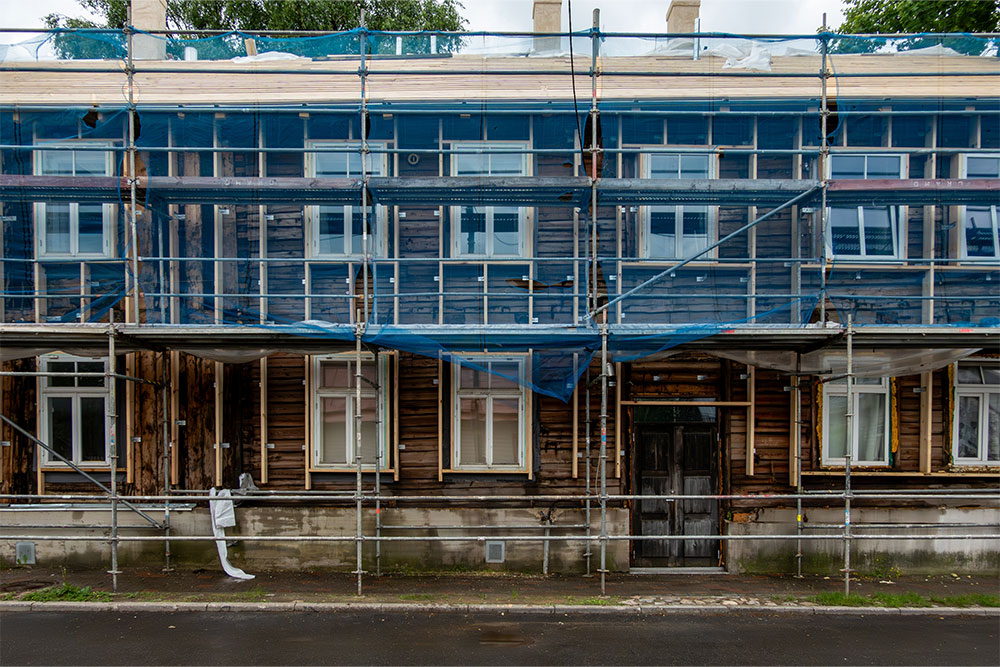
Falling from Scaffolding
Scaffolding looks like a playground climbing frame to oblivious members of the public, particularly children. But anyone climbing scaffolding without adequate knowledge, experience, training and equipment is at serious risk of falling.
To prevent climbing, enclose the base of the scaffolding wherever possible. Remove and lock away ladders outside of hours, too. These measures are especially important for construction sites near schools or residential areas.
If possible, replace scaffolding with mobile elevated work platforms (MEWPs). MEWPs are easier to take down and isolate at the end of a workday, preventing unwanted access.
Falling into Openings
Members of the public can fall into trenches, utility holes and other openings on a construction site.
Cover all openings securely when not in use and install barriers around them. Use safety signs to warn people, and check that your perimeter protections effectively prevent access to these high-risk areas.
Struck by a Moving Vehicle
Vehicles moving in and out of construction sites pose a risk of striking pedestrians. Obstructing pavements can also force pedestrians into the road.
Implement traffic management plans that include designated pedestrian pathways and vehicle routes. Use barriers to separate vehicles from pedestrian areas, and ensure all drivers and operators are trained and competent. Employ a banksman to guide vehicles when reversing or manoeuvring.
Vulnerable Groups
Certain groups are particularly vulnerable to construction hazards, including older adults, people with disabilities and children. These groups may not fully understand the risks or be able to avoid dangers effectively.
So, it’s essential to secure the site thoroughly, especially during off-hours. Ensure fencing is intact, gates are closed, and scaffolding ladders are removed or blocked off at the end of each workday. Also, machinery must be immobilised, hazardous materials must be locked away and any openings should be barricaded.
Protecting the Public During Construction – Key Takeaways
- Construction is the UK’s most dangerous industry. You must take steps to protect your workers as well as members of the public from hazards on-site.
- Ensure compliance with laws such as the HSWA 1974, the Management Regulations and CDM 2015 to prevent public harm.
- Manage site access by planning, providing and maintaining effective perimeters.
- Control hazards like falling objects, scaffolding and vehicles through targeted safety measures.
- Protect vulnerable groups, including children and older people, by securing the site during non-working hours.
CDM Duty Holder Training
Protecting the public during construction work requires diligent planning, effective site access management and thorough control of hazards.
Our online CDM Duty Holder Training can help you handle these responsibilities. This comprehensive ten-module course covers all aspects of the Construction (Design and Management) Regulations 2015, ensuring you’re well-prepared to protect both workers and the public.
You’ll learn what duty holders must do to prevent accidents and safeguard the wellbeing of workers and the public around construction sites.

